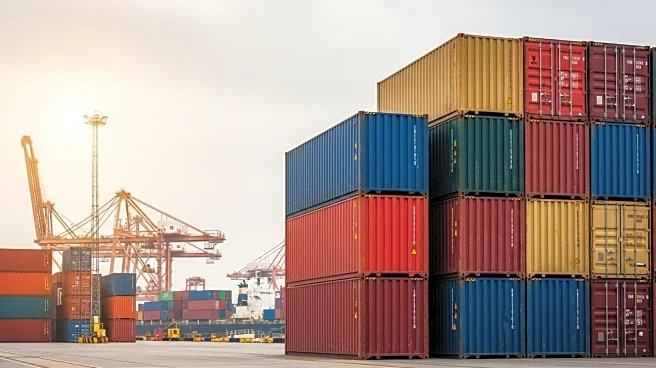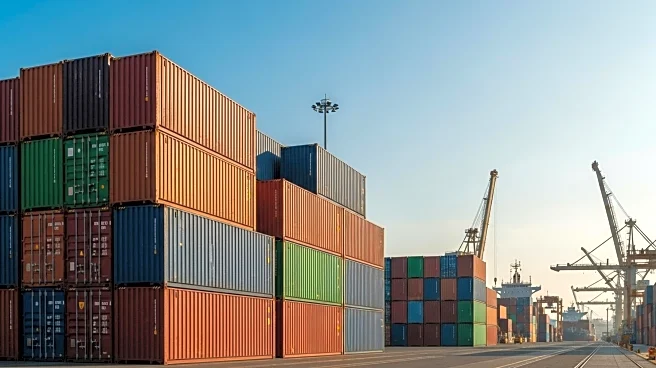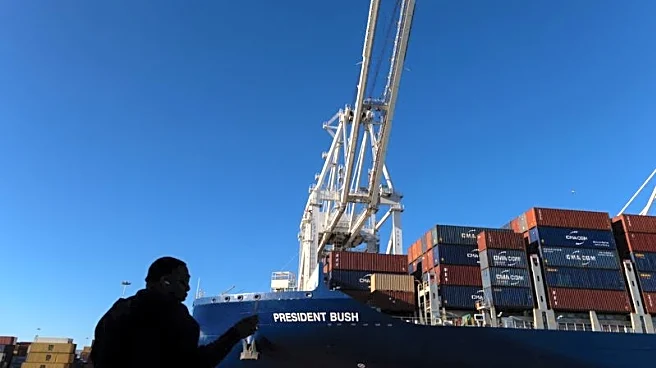What's Happening?
The container shipping industry is bracing for a challenging fourth quarter as freight rates continue to decline. The Shanghai Containerized Freight Index (SCFI) recently broke its 11-week losing streak, rising by 30 points to 1,445 points. However, the World Container Index, published by Drewry, fell by 6% to $2,119 per forty-foot equivalent unit (feu), with expectations of further declines. Analysts predict that the transpacific trade lane will be particularly affected, with rates nearing pre-Red Sea crisis levels. John McCown from Blue Alpha Capital warns of a significant downturn, citing the National Retail Federation's projection of a 5.6% decrease in total inbound volume for 2025. This forecast suggests a severe 17.5% decline for the final five months of the year. Despite potential temporary support from capacity discipline, the persistent demand-supply imbalance is expected to push rates down further.
Why It's Important?
The declining freight rates and projected downturn in the container shipping industry have significant implications for global trade and the U.S. economy. Lower rates could lead to reduced profitability for carriers, impacting their financial stability and potentially leading to cost-cutting measures. This situation may affect U.S. importers and exporters, who rely on stable shipping costs for their operations. The anticipated decline in inbound volume could also signal a slowdown in consumer demand, affecting retailers and manufacturers. Additionally, the industry's challenges may influence broader economic indicators, such as trade balances and inflation rates, as shipping costs are a critical component of global supply chains.
What's Next?
As the industry faces these challenges, carriers may need to implement strategies to mitigate losses, such as reducing capacity or increasing blank sailings. Analysts suggest that the Pacific trade lane could experience further declines in demand and spot rates, particularly after the Chinese Golden Week in October. Shippers should prepare for potential disruptions and adjust their logistics plans accordingly. The industry will likely continue monitoring market conditions and adjusting strategies to navigate the persistent overcapacity and demand-supply imbalance. Stakeholders, including policymakers and industry leaders, may need to consider measures to support the sector and ensure its resilience in the face of ongoing challenges.
Beyond the Headlines
The current situation in the container shipping industry highlights broader issues of overcapacity and market volatility. These challenges may prompt discussions on sustainable practices and long-term strategies to stabilize the industry. The potential for endemic overcapacity could lead to shifts in pricing models and operational approaches, influencing how carriers and shippers manage their logistics. Additionally, the industry's struggles may underscore the need for innovation and technological advancements to enhance efficiency and adaptability in a rapidly changing global trade environment.












